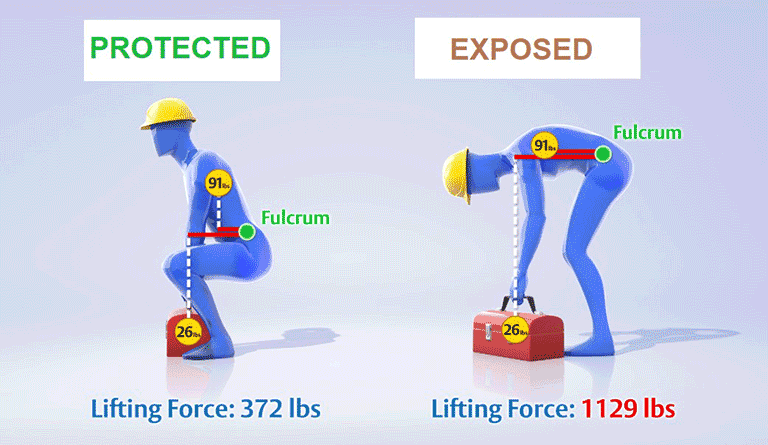Safety Leadership: Reducing exposure to help prevent soft-tissue injuries: The leader’s role

Editor’s Note: Achieving and sustaining an injury-free workplace demands strong leadership. In this monthly column, experts from global consulting firm DEKRA share their point of view on what leaders need to know to guide their organizations to safety excellence.
According to the Bureau of Labor Statistics, 34% of all workplace injuries are the result of overexertion. In addition, 43% of all injuries are sprains, strains and tears – known as soft-tissue injuries or musculoskeletal injuries.
Because soft-tissue injuries occur beneath the skin, they can be less conspicuous, especially to leadership. This can cause leaders to be skeptical, affecting their relationship with the injured worker.
Often, workers may not be aware of what’s causing their chronic pain or discomfort. Therefore, leaders need to become aware of and understand what they can do to help. To reduce soft-tissue injuries, leaders need to:
- Understand what causes soft-tissue injuries
- Assess the nine load factors that drive these injuries
- Implement controls to reduce the load and exposure
The nine types of ergonomic loads are:
- Forceful exertion
- Joint misalignment – an awkward posture in which a joint is flexed, bent or extended toward its end range of natural motion
- Speed
- Frequency
- Duration
- Static posture
- Vibration
- Contact stress – anything hard or sharp that can crush, distort, diminish blood supply or cut tissue when it contacts the body
- Temperature
Each load places exposure on the body and can result in an injury.
3D medical animation can show what’s occurring underneath the skin. The response to seeing the evidence of the causes of injuries has been overwhelmingly positive. When leaders better understand soft-tissue injuries, they can employ the necessary adjustments in the work process to reduce or eliminate the exposure(s). Workers then learn the importance of body alignment (and other modified work methods) on injury prevention.

Note that in the exposed posture (above), the lifting force is increased by 757 pounds.
The preferred method of controlling ergonomic exposure is to engineer out the bodily contact through tools and equipment. If a conveyor or other mechanical movement aid can be used, the exposure is eliminated. Because this isn’t always technically feasible, leaders need to implement measures to reduce the worker’s exposure to the ergonomic hazard. This can be accomplished via job rotation, controlling the pace of work, reducing the size of items handled, employing multi-person lifts and designing handles to reduce grip force. As a last line of defense, personal protective equipment can reduce load and ergonomic risk factors.
By educating leaders and workers on the causes of soft-tissue injuries, implementing controls to reduce exposure and providing visual aids, the ergonomic process is streamlined and exceptional safety performance can be achieved.
This article represents the views of the authors and should not be construed as a National Safety Council endorsement.
 Bruce Madsen is a vice president in the consulting practice at DEKRA North America (dekra.us/consulting), specializing in industrial ergonomics. He helps workers across industries prevent work-related musculoskeletal and soft-tissue injuries.
Bruce Madsen is a vice president in the consulting practice at DEKRA North America (dekra.us/consulting), specializing in industrial ergonomics. He helps workers across industries prevent work-related musculoskeletal and soft-tissue injuries.
 Grace Thai is a principal consultant in the consulting practice at DEKRA North America. She is passionate about helping organizations prevent incidents and foster a proactive safety culture.
Grace Thai is a principal consultant in the consulting practice at DEKRA North America. She is passionate about helping organizations prevent incidents and foster a proactive safety culture.
Direct to your inbox: Sign up to be notified in email about new "Safety Leadership" columns.
Post a comment to this article
Safety+Health welcomes comments that promote respectful dialogue. Please stay on topic. Comments that contain personal attacks, profanity or abusive language – or those aggressively promoting products or services – will be removed. We reserve the right to determine which comments violate our comment policy. (Anonymous comments are welcome; merely skip the “name” field in the comment box. An email address is required but will not be included with your comment.)

